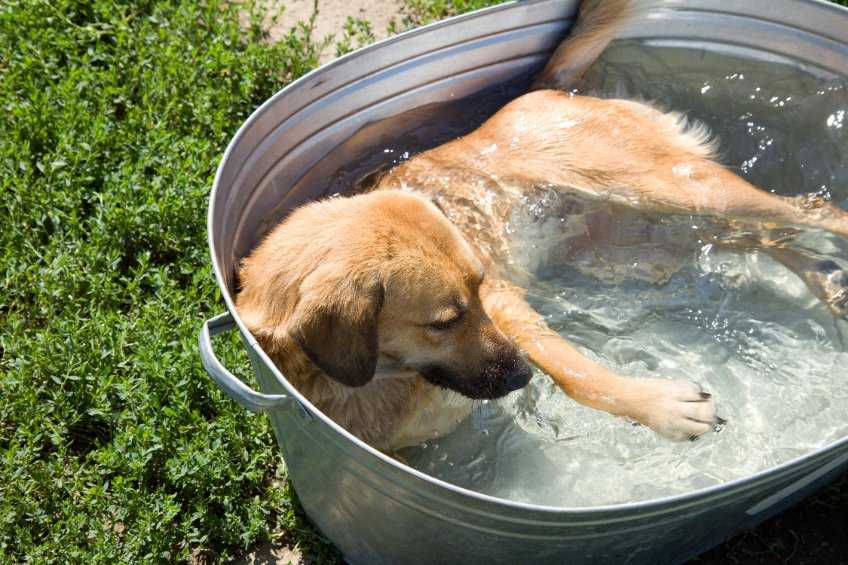Heatstroke is a serious condition that can occur in dogs when their body temperature becomes dangerously high, typically as a result of prolonged exposure to high temperatures or excessive physical activity in hot weather. This condition can have severe health implications, making understanding and prevention critical for all dog owners.
Understanding Heatstroke in Dogs
Heatstroke in dogs can develop when their body’s ability to dissipate heat is overwhelmed. Unlike humans, dogs do not sweat through most of their skin, which limits their ability to cool down through evaporation. Instead, they rely primarily on panting to expel heat, which is less efficient and can quickly become inadequate in extreme conditions.
- Potential Consequences: Heatstroke can lead to multiple organ failure, neurological damage, and even death if not promptly addressed. Early signs include excessive panting, drooling, reddened gums, and lethargy. As the condition progresses, dogs may exhibit signs of distress such as vomiting, diarrhea, uncoordinated movement, and collapse.
Preventive Measures to Protect Dogs from Heat-Related Illnesses
To prevent heatstroke and other heat-related illnesses in dogs, it’s crucial to take proactive steps to manage their environment and activities:
- Avoid Hot Pavement: Surfaces like asphalt can become scorching in the sun, potentially burning a dog’s paws and increasing their body temperature. Always test the pavement with the back of your hand; if it’s too hot for you, it’s too hot for your dog.
- Provide Ample Shade and Water: Ensure your dog has access to plenty of fresh water and shaded areas, especially when outside. A portable water bowl is essential during walks and outdoor activities.
- Schedule Activities During Cooler Times: Plan walks and playtimes during the cooler parts of the day, typically early morning or late evening. Avoid midday heat, as it poses the highest risk.
Recognizing Signs of Heatstroke in Dogs
Being able to recognize the signs of heatstroke promptly can be life-saving for your dog:
- Early Signs: Look for excessive panting, drooling, and elevated heart rate. Dogs might also seem less responsive to commands and show signs of discomfort or confusion.
- Advanced Symptoms: As heatstroke progresses, symptoms may include vomiting, diarrhea, staggering, seizures, and unconsciousness.
Actionable Tips for Preventing Heat-Related Issues
Implementing the following tips can further help prevent heatstroke and other heat-related complications in dogs:
- Acclimatization: Gradually acclimate your dog to warm weather by slowly increasing the time they spend outdoors.
- Cooling Products: Utilize cooling vests, mats, and bandanas that can help lower your dog’s body temperature. These products are particularly useful during walks or prolonged periods outdoors.
- Never Leave Your Dog in a Parked Car: Even with windows open, the temperature inside a parked car can rise rapidly to dangerous levels. Leaving a dog in a parked car is one of the leading causes of heatstroke.
By understanding the risks and signs of heatstroke and implementing these preventative measures, dog owners can safely ensure their pets enjoy the warm weather. It’s essential to closely monitor your dog’s behavior and physical condition during hot weather and respond quickly if you suspect they are overheating. Early intervention prevents serious health outcomes and ensures your dog’s safety and well-being.
Deep Dive into Canine Perspiration: Exploring the Science Behind Dog Sweating

By understanding the science behind canine perspiration and implementing effective heat management strategies, pet owners can significantly enhance the well-being and comfort of their dogs.
This comprehensive approach not only helps in preventing heat-related health issues but also ensures that dogs can enjoy outdoor activities safely throughout the summer months.
Continue reading: Exploring the Science Behind Dog Sweating
Heatstroke in Dogs – What You Need to Know

Heatstroke is a serious condition that can cause severe health issues for your dog if undetected and left untreated.
If your dog is left outside without shelter from the sun and access to fresh cool water, you are increasing the risk that your dog will experience heatstroke.
Continue reading: Heatstroke in Dogs – What You Need to Know

